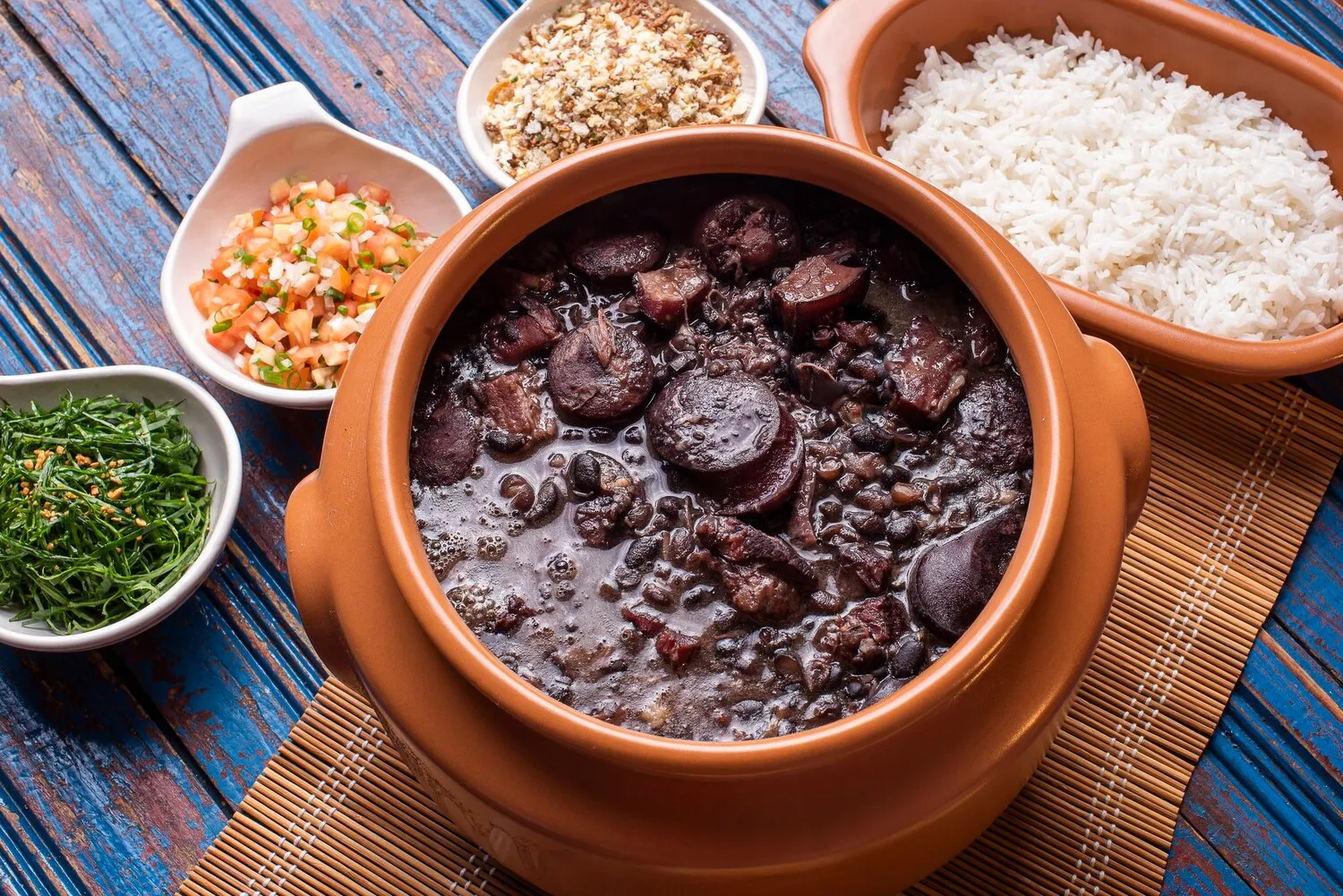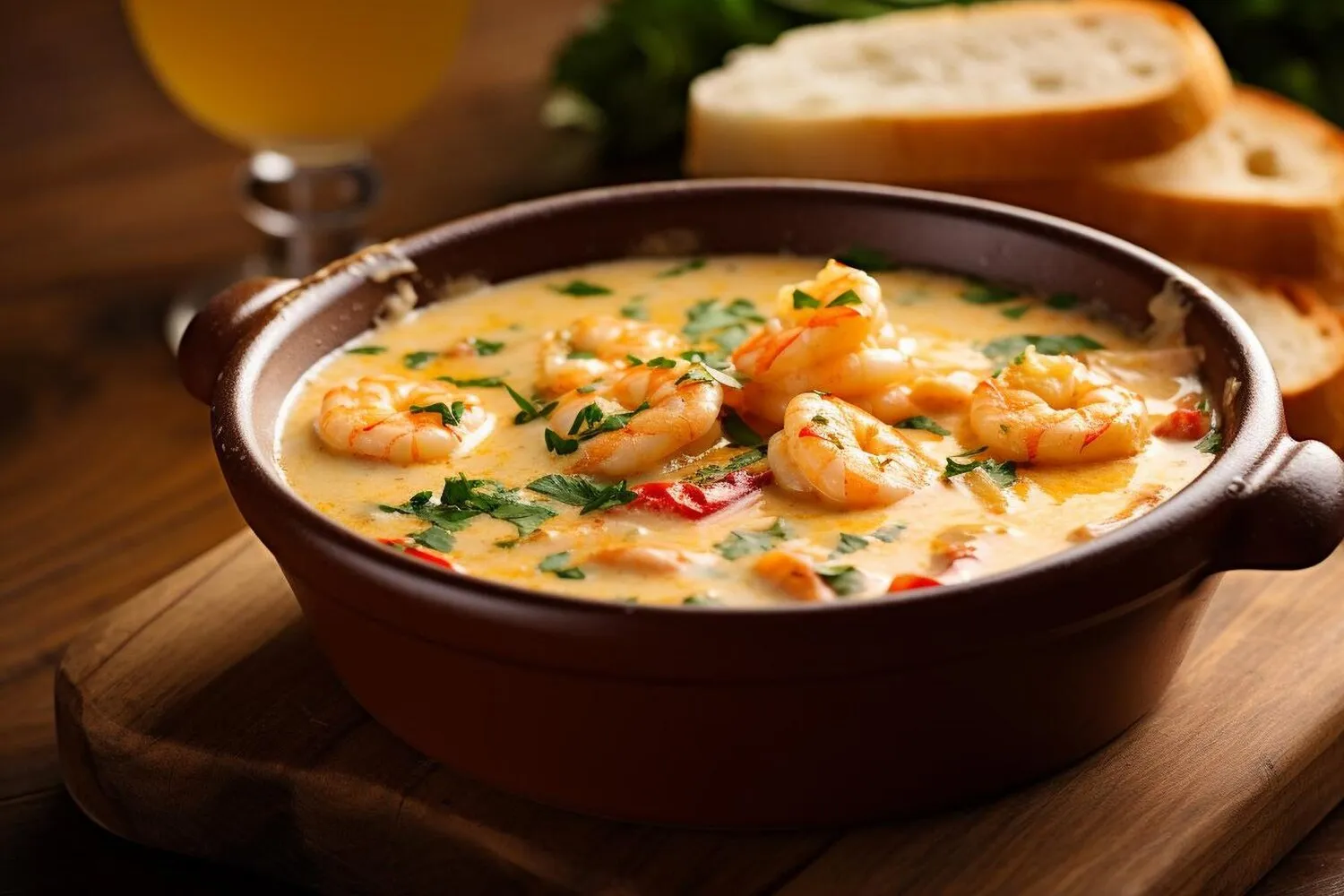
Feijoada
Traditional Brazilian black bean stew with various cuts of pork and beef.
Nutrition Facts
* The % Daily Value (DV) tells you how much a nutrient in a serving of food contributes to a daily diet. 2,000 calories a day is used for general nutrition advice.
Recanto do Compadre
Feijoada's origins are debated, with some believing it originated with enslaved Africans using discarded pork parts, while others trace it to European stews. Regardless, it evolved into a national dish, reflecting Brazil's diverse culinary influences.
Feijoada is more than just a meal; it's a social gathering, a celebration, and a symbol of Brazilian identity. It's often enjoyed on weekends with family and friends.
Social Gathering
Feijoada is typically prepared in large quantities and shared among friends and family, making it a central part of social gatherings and celebrations.
Weekend Tradition
Traditionally, Feijoada is enjoyed on Wednesdays and Saturdays, allowing ample time for preparation and digestion. It has become strongly associated with weekend meals.
Regional Variations
While the core ingredients remain consistent, regional variations exist. Some regions may include specific cuts of meat or local vegetables, reflecting the diverse culinary landscape of Brazil.
Symbol of National Identity
Feijoada is widely considered Brazil's national dish, representing its history, cultural diversity, and culinary traditions. It's a dish that unites Brazilians from all walks of life.
Feijoada is characterized by its rich, savory, and smoky flavors, a result of the slow cooking process and the combination of black beans and various pork and beef cuts.
The flavor profile is a complex layering of earthy black beans, smoky and salty cured meats like dried beef (carne seca), smoked sausage (linguiça), bacon, and various cuts of pork (ears, feet, tail). Garlic, onion, and bay leaves contribute aromatic depth. The stew is traditionally served with accompaniments like white rice, collard greens (couve), orange slices, and farofa (toasted cassava flour), which offer textural and flavor contrasts.
Soaking the Beans
Soak the black beans overnight (or for at least 4 hours) to reduce cooking time and improve digestibility.
Desalting the Meats
Desalt the salt-cured meats (carne seca, bacon) by soaking them in water for several hours, changing the water frequently, to remove excess salt.
Slow Cooking is Key
Slow cooking is essential for tenderizing the meats and allowing the flavors to meld together. Use a slow cooker or a heavy-bottomed pot on low heat.
Layering the Flavors
Add the meats in stages, starting with the tougher cuts that require longer cooking times, and finishing with the sausages towards the end.
Serve with Accompaniments
Serve Feijoada with traditional accompaniments like white rice, collard greens (couve), orange slices, and farofa (toasted cassava flour) to complement the rich flavors of the stew.
Explore additional Traditional Stew dishes and restaurants
Explore Traditional StewDiscover top dining spots and culinary experiences in Jacareí.
Explore JacareíLearn more about the food culture, restaurant scene, and culinary heritage of Brazil.
Explore Brazil
